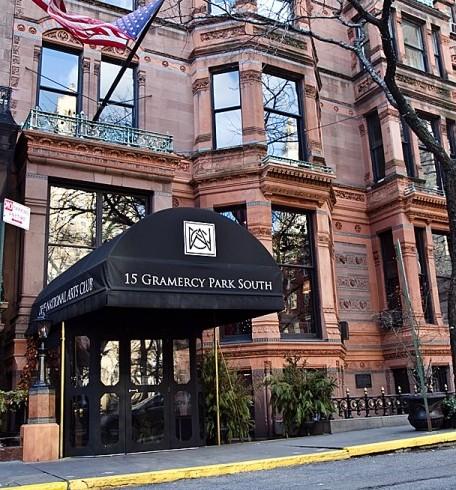Built: 1881–1884
Architect: Calvert Vaux of Vaux & Radford
Location: 15 Gramercy Park South
Although it is a home designed with protection and a quick escape tunnel, 15 Gramercy Park South never served its intended purpose. Instead, it has been home to the National Arts Club for over a century.
In the Gramercy Park Historic District, 15 Gramercy Park remains a remnant of its time—resisting the quick ebb and flow of New York City.
“This district is today serene and coherent because it reflects the quietness of a park—and also of another century. It is an area in which the original beauty was so great that it has been able to resist … change which could have destroyed it,” reported the New York City Landmark Preservation Commission.
Designed by Calvert Vaux, the architecture is derived from the Gothic Revival or Victorian-Gothic movement—incepted in the late 18th century against the religious nonconformism. The dual-colored facade, brownstone and black granite trim, combined with the horizontal belt courses and pointed arch windows each of a different colored stone, makes this structure admirable.
“The structure is an impressive expression of Victorian-Gothic architecture,” states a 1966 Landmark Preservation Commission report.
The bands of stone across the facade elegantly display leafy and seashell-like ornaments and busts of famous figures. Above an entrance and over the other busts is one of Michelangelo sculpted by Sergio Rossetti Morosini, which adds to the Gothic Revival style.
New York City Structures: National Arts Club: Originally Samuel Tilden House
Although it is a home designed with protection and a quick escape tunnel, 15 Gramercy Park South never served its intended purpose.

Part of the Gramercy Park Historic District, 15 Gramercy Park remains as a remnant of its time. Benjamin Chasteen/The Epoch Times
|Updated:





